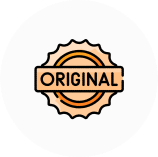
Please Wait ...

Please Wait ...
Enquiry






Curently We are Not Serviceable In this Pincode
91 Springboard, Business Hub, Godrej & Boyce, Gate No. 2, LBS Marg, Vikhroli West, Mumbai, 400079
91 Springboard, Business Hub, Godrej & Boyce, Gate No. 2, LBS Marg, Vikhroli West, Mumbai, 400079
91 Springboard, Business Hub, Godrej & Boyce, Gate No. 2, LBS Marg, Vikhroli West, Mumbai, 400079
91 Springboard, Business Hub, Godrej & Boyce, Gate No. 2, LBS Marg, Vikhroli West, Mumbai, 400079
91 Springboard, Business Hub, Godrej & Boyce, Gate No. 2, LBS Marg, Vikhroli West, Mumbai, 400079
91 Springboard, Business Hub, Godrej & Boyce, Gate No. 2, LBS Marg, Vikhroli West, Mumbai, 400079
91 Springboard, Business Hub, Godrej & Boyce, Gate No. 2, LBS Marg, Vikhroli West, Mumbai, 400079
91 Springboard, Business Hub, Godrej & Boyce, Gate No. 2, LBS Marg, Vikhroli West, Mumbai, 400079
91 Springboard, Business Hub, Godrej & Boyce, Gate No. 2, LBS Marg, Vikhroli West, Mumbai, 400079
Min
Max
₹5,000
₹45,000
Suggested Price







Blogs> Know and prolong the life spans of your LED and Smart tvs!!

LED and Smart TVs are durable entertainment devices with a lifespan typically ranging from 60,000 to 100,000 hours of use. However, this longevity can be influenced by various factors such as usage patterns, maintenance, environmental conditions, and component quality. TVs from reputable brands with high-quality components generally have a longer lifespan compared to cheaper alternatives. To extend the lifespan of LED and Smart TVs, several practical strategies can be implemented. Proper ventilation is crucial to prevent overheating, while adjusting brightness and contrast settings optimally can prevent display panel degradation. Regular firmware updates are essential to address potential issues and ensure optimal performance. Connecting the TV to a surge protector safeguards against power surges and voltage fluctuations. Avoiding the prolonged display of static images or logos can prevent image retention on LED screens. Regular cleaning with a soft cloth helps remove smudges and dust particles without damaging the screen. Handling the TV with care and enabling power-saving features also contribute to prolonging its lifespan. Additionally, keeping the TV in a climate-controlled environment helps prevent damage from extreme temperatures or humidity levels. By following these practical tips, users can maximize the longevity and efficiency of their LED and Smart TVs, ensuring years of reliable performance and enjoyment. Regular maintenance and care play a crucial role in optimizing the lifespan and performance of these electronic devices, ultimately enhancing the overall viewing experience for users.
The lifespan of LED and Smart TVs can vary depending on several factors such as usage patterns, quality of components, maintenance, and environmental conditions. However, as a general guideline:
It’s important to note that while LED and Smart TVs can last for many years, their lifespan may be affected by various factors such as:
Overall, with proper care and maintenance, LED and Smart TVs can provide many years of reliable performance before needing replacement.
How can you extend the life of LED and smart TVs?
To extend the life of LED and Smart TVs, you can follow these tips:
By following these tips, you can help extend the life of your LED and Smart TV, ensuring years of reliable performance and enjoyment.

By Digi2L - April 27, 2024

By Digi2L - April 26, 2024

By Digi2L - April 25, 2024